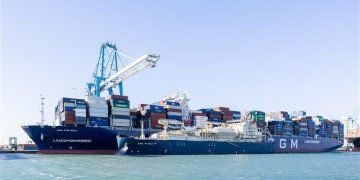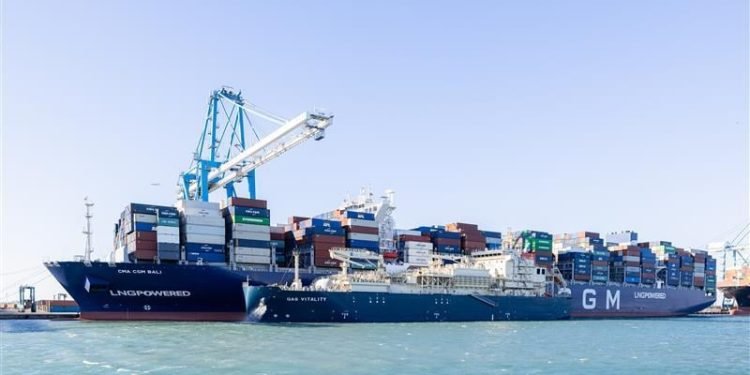By Maria Kalamatas | July 28, 2025
Rotterdam, July 28 — Two of Europe’s biggest energy and shipping players are teaming up to expand cleaner fuel options for the maritime sector. TotalEnergies and CMA CGM have announced a joint venture to operate a 20,000-cubic-meter LNG bunker vessel in Rotterdam, set to enter service by 2028.
“This project is about building real-scale solutions, not pilot programs,” said Philippe Arnaud, head of marine fuels at TotalEnergies. “Shipping companies are demanding reliable LNG supply, and we’re putting the infrastructure in place.”
Demand for cleaner fuels drives the move
The International Maritime Organization’s tightening emissions standards have accelerated demand for LNG as a transition fuel. Rotterdam, already Europe’s busiest bunkering port, is expected to see LNG demand rise by over 30 percent by the end of the decade, according to Port Authority data.
By positioning a high-capacity bunker vessel in the port, the joint venture aims to supply ocean carriers on major Europe–Asia and transatlantic routes.
A shift in fueling strategies
Carriers such as Hapag-Lloyd, MSC, and Maersk have been increasing LNG-powered fleet capacity. However, operators still face gaps in supply, with most LNG bunkering stations concentrated in Northern Europe and Singapore.
“This venture helps bridge the supply gap and gives shipowners confidence to accelerate LNG adoption,” Arnaud added.
Broader implications for shipping
The initiative is expected to ease the transition for carriers seeking to comply with IMO rules without shifting entirely to alternative fuels like methanol or ammonia, which remain in early stages of adoption.
Analysts believe the project could also pressure other ports — including Antwerp and Hamburg — to expand LNG infrastructure to stay competitive.
Looking ahead
Construction of the vessel will begin in early 2026, with commissioning planned for the third quarter of 2028. The partners expect the unit to handle over a million metric tons of LNG annually once operational.
“Rotterdam is the logical first step,” Arnaud said. “But our long-term goal is to replicate this model in other key hubs worldwide.”























